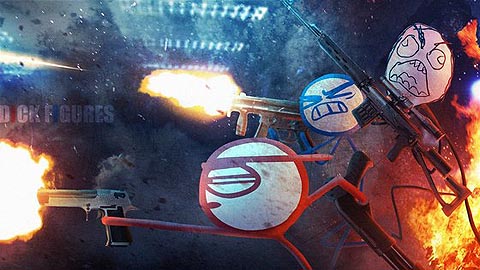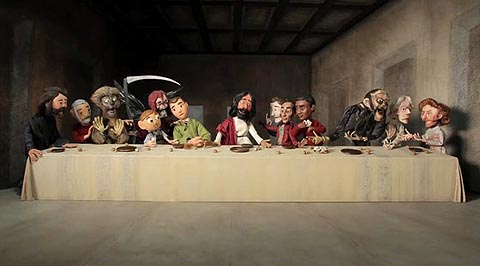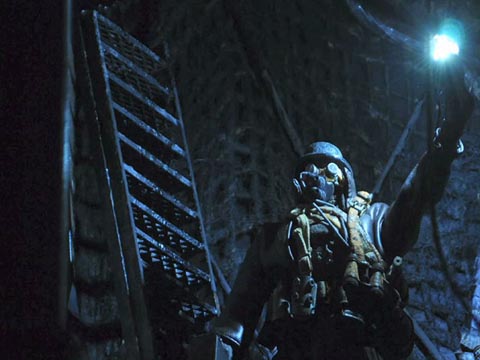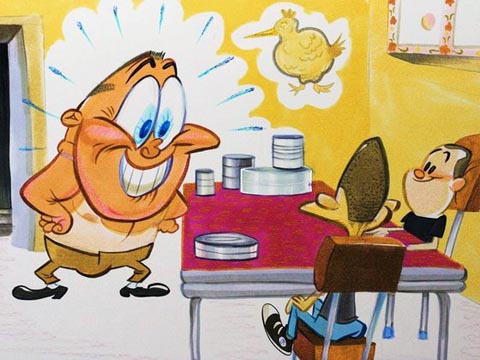

Report: Animators Are Raising Big Money On Kickstarter

When television creators Dan Harmon (Community) and Dino Stamatopoulos (Moral Orel) — partners in Los Angeles production company Starburns Industries — were thinking of ideas to develop for animation, they remembered a Charlie Kaufman-penned play called Anomalisa that they’d seen staged in Los Angeles in 2005. They envisioned great possibilities for the project, and soon had Kaufman’s blessing to pursue funding to produce an animated film.
The only hitch was that the idea — a 40-minute stop-motion film revolving around a man crippled by the mundanity of his existence — wasn’t an easy sell to either TV networks or film studios who have predefined notions of what animation is. In another country, they might have been funded by a government arts program, but in the United States, Anomalisa was destined to languish as an idea.
Enter crowd-funding.
Harmon and Stamatopoulos launched a campaign in early July using the online fundraising website Kickstarter. Their campaign, which ended yesterday afternoon, set a new record for an animation project on the crowd-funding platform, raising over $406,000, more than double its goal. More impressively, it is at least the 5th animated project that has raised over $100,000 this past summer on Kickstarter.
Kickstarter says that films have been the second-most funded category on their site this year with over $42 million pledged through August 31. They haven’t provided a breakout for what percentage of that amount has gone toward animation projects, but it is in the millions of dollars.
The director of the forthcoming Anomalisa is Duke Johnson, a veteran of Starburns projects including Moral Orel and Mary Shelley’s Frankenhole. Johnson explains to Cartoon Brew how the crowd-funding route can be a boon to both the filmmakers and the audience:
“For this particular project, we are inspired by the idea of a pure artistic vision from script to screen. Meaning that all creative and even technical decisions, like distribution, are made by a core creative team with no incentive beyond making the best possible film out of a script they believe in. Which we believe will ultimately give people something they really want and can’t otherwise have.”

Visual effects veteran Phil Tippett, who owns the esteemed Tippett Studio in Berkeley, California, recently restarted production on a twenty-year-old personal film project called Mad God, which he calls an “anti-studio, anti-corporate, anti-commercial statement.” He got back into it at the urging of younger employees working at his studio who wanted to step away from their computers and learn the craft of stop motion animation. To fund the project, Tippett initially auctioned props from his long career in visual effects, including an AT-AT Imperial Walker from The Empire Strikes Back and a RoboCop puppet from RoboCop 2.
When the funds from those auctions began to dwindle, Tippet turned to Kickstarter. He sought to raise a conservative $40,000 to cover the costs of studio space, crew lunches, hard drive storage, lab services and other bare essentials. He admits the costs would be much higher if not for the all-volunteer crew and the fact that he owns a lot of film equipment after decades of running his own studio.
Tippett raised more than three times his goal—$124,156—enough to comfortably complete the first chapter of Mad God. He says that the free-from nature of the film, which he likens to painting or sculpture more than filmmaking, leaves it open to an indefinite number of episodes. “The narrative allows me to go back in and open it up,” he told me. “It’s not stuck to a logical timeline. The chapters will continue to get revised over the years.”
Just to be safe, Tippett has already shot an end title for Mad God — “If I die, that’s the end,” — though intriguingly, he also suggests that other artists “after me or alongside me” could take aspects of Mad God and expand upon the concept in different directions.

Another animation veteran who has embraced Kickstarter is Ren and Stimpy creator John Kricfalusi. His run-ins with network executives have been well documented throughout the years so when he wanted to resurrect a short film idea based on his character George Liquor, he reached out directly to his fans.
During his fundraising campaign, he told potential supporters on his Kickstarter page, “This is the absolute best way for me to make cartoons for you without pesky executives and middlemen second guessing every gag and drawing I do!” Feeding into the anti-corporate sentiment, one of the rewards he offered was a producer’s shirt that reads, “I Made It Happen! The Body In This Shirt Is The Official Producer of John K’s Can Without Labels.”
Kricfalusi easily exceeded the $110,000 goal needed to produced an 8-to-10 minute short. He wrote that the budget was only half of what it would have cost to produce a Ren and Stimpy short at his former studio Spümcø. The lessened cost is due in large part to the way that Kricfalusi has revamped his production pipeline. He no longer ships animation overseas, instead producing the animation from a home studio equipped with Toon Boom software and a small crew of artists.

The projects by Starburns, Tippett and Kricfalusi aren’t based on series currently in production, and they were able to achieve their financial goals largely on the reputations of their creators. However, two other Kickstarter animation campaigns that have recently concluded with six-figure pledge totals are based on series currently in production. The creators of the Animusic dvd series raised $223,137 to produce a third installment in their series that combines computer animation and electronic music. Meanwhile, the popular Flash-animated series Dick Figures, produced by Six Point Harness and distributed online by Mondo Media, blasted past its $250,000 goal to reach $313,412.
Ed Skudder and Zack Keller, the creators of Dick Figures, encouraged fans to donate so that they could produce a movie-length version of their cartoon. Their financing campaign benefitted from Mondo Media’s 1.1 million YouTube subscribers, says Aaron Simpson, vp of animation and business development at Mondo Media. The company embedded ads for the Kickstarter campaign throughout their YouTube videos, which resulted in approximately half of the Kickstarter funding.
Simpson is quick to point out that having a popular online animated series doesn’t guarantee a successful crowd-funding campaign. Last year, Mondo Media conducted a campaign for its well-established Happy Tree Friends, which raised only 10% of its goal. The company learned a lot from that early failure, including the importance of offering rewards revolving around the project itself (HD film downloads, film soundtracks, behind-the-scenes making-ofs). Ancillary rewards (T-shirts, posters) are fine too, but Simpson says that many supporters are more interested in items directly related to the project itself.
Simpson points out the importance of “creating something really, really special” in relation to the existing product. The creators of Dick Figures didn’t simply ask audiences to fund the production of additional shorts of the same length, but to help create a movie. And successfully reaching a goal is not the end of the line: another important part of their strategy was to create an online space where fans could continue to support the project financially even after the initial Kickstarter campaign was completed.
The Kickstarter projects discussed here all benefitted from being attached to well known creators or established animation properties. It would be unreasonable to expect that an independent or moderately successful filmmaker could raise a similar six-figure amount. That doesn’t diminish the achievement of these campaigns, however. Even known filmmakers such as those in this article would have struggled to raise hundreds of thousands of dollars from their fans just a few years ago.
Over the summer, crowd-funding finally emerged as a viable alternative to traditional animation financing models. There are enough people who are using platforms like Kickstarter to support the production of professional-quality animated films by name filmmakers. The possibilities are, indeed, limitless now that filmmakers and fans can connect directly with one another instead of relying on third parties. For animation, it may herald a new era of more innovative and unique projects.
Anomalisa by Starburns Industries
Goal: $200,000
Length of Film Project: Approx. 40 minutes
Projected per Minute Cost of Animation: $5,000
Raised: $406,237
Backers: 5,770
Average Pledge: $70.41
Mad God by Phil Tippett
Goal: $40,000
Length of Film Project: Approx. 12 minutes
Projected per Minute Cost of Animation: $3,333
Raised: $124,156
Backers: 2,523
Average Pledge: $49.21
Cans Without Labels by John Kricfalusi
Goal: $110,000
Length of Film Project: Approx. 8-10 minutes
Projected per Minute Cost of Animation: $11,000-13,750
Raised: $136,724
Backers: 3,562
Average Pledge: $38.38
Dick Figures: The Movie by Six Point Harness
Goal: $250,000
Length of Film Project: 30 minutes
Projected per Minute Cost of Animation: $8,333
Raised: $313,412
Backers: 5,616
Average Pledge: $55.81
Animusic 3 by Animusic
Goal: $200,000
Length of Film Project: Approx. 40 minutes (based on previous Animusic release)
Projected per Minute Cost of Animation: $5,000
Raised: $223,137
Backers: 3,284
Average Pledge: $67.95

.png)